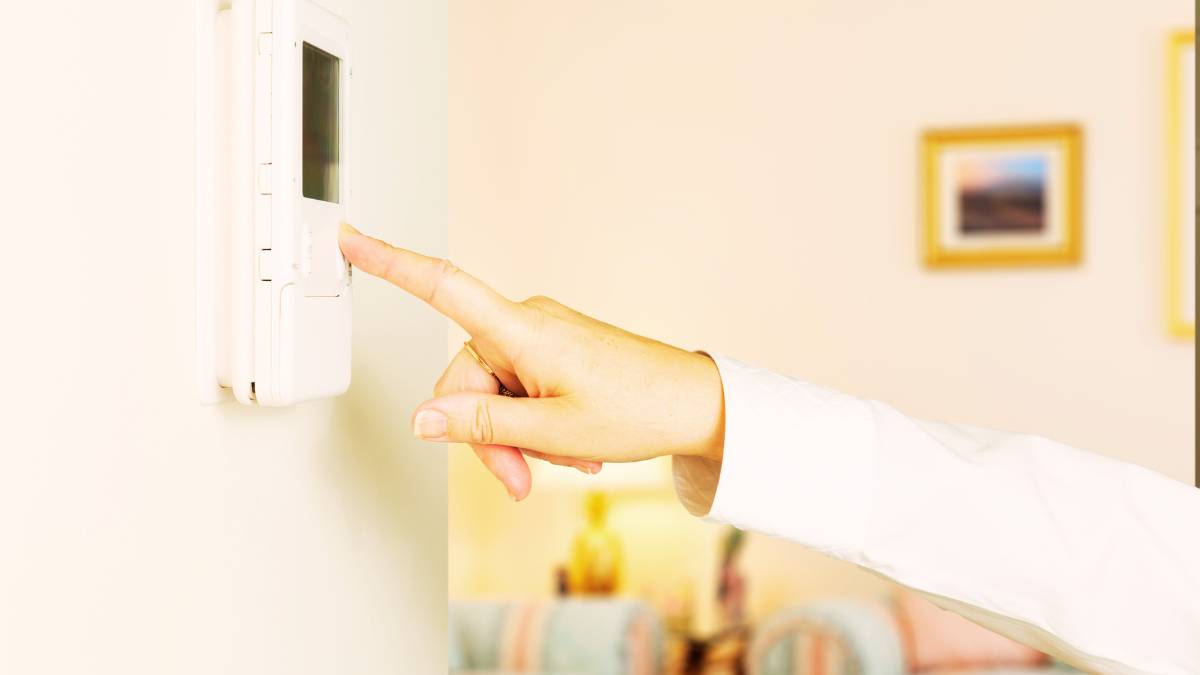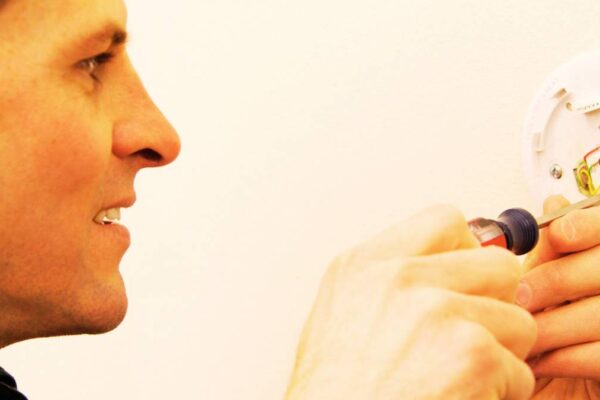Thermostats act as the brains of your heating, ventilation, and air conditioning (HVAC) system, controlling the temperature inside to keep you comfy. But if your thermostat doesn’t work right, it can make you uncomfortable, waste energy, and even damage your HVAC system. We will talk about the most common problems with a faulty thermostat, how to spot them, and how to fix them in this guide.
- Thermostats play a crucial role in regulating HVAC systems, but when faulty, they can lead to discomfort and energy inefficiency.
- Common signs of a faulty thermostat include inaccurate temperature readings, unresponsive controls, short cycling, and constant HVAC system running.
- Troubleshooting steps involve checking power sources, cleaning and calibrating the thermostat, inspecting wiring connections, and potentially resetting or replacing the device.
- Understanding the causes of faulty thermostats, such as age, dust accumulation, electrical problems, and incorrect installation, can help prevent issues and ensure reliable operation.
Common Signs of a Faulty Thermostat
Inaccurate Temperature Reading
One of the most evident signs of a faulty thermostat is when it displays incorrect temperature readings. You may notice that the displayed temperature does not match the actual ambient temperature in your home.
Failure to Turn On or Off
If your HVAC system fails to turn on or off when it should, the thermostat could be the culprit. This issue can lead to uncomfortable temperature fluctuations and increased energy consumption.
Short Cycling
Short cycling occurs when the HVAC system turns on and off frequently in short intervals. A faulty thermostat can mistakenly signal the system to cycle more frequently than necessary, leading to premature wear and tear on components.
Unresponsive Controls
If the thermostat does not respond when you attempt to adjust the settings or change the temperature, it could indicate internal issues or wiring problems.
Constantly Running HVAC System
A malfunctioning thermostat may cause the HVAC system to run continuously, even when the desired temperature has been reached. This can result in higher energy bills and unnecessary strain on the equipment.
How to Fix Faulty Thermostat
Check Power Sources: Ensure that the thermostat is receiving power. If it is battery-operated, replace the batteries and check for any corrosion on the battery terminals. For wired thermostats, inspect the circuit breaker or fuse box to ensure there is power to the HVAC system.
Clean and Calibrate: Dust and debris can accumulate within the thermostat, affecting its accuracy. Use a soft brush or compressed air to clean the interior components gently. Additionally, consider recalibrating the thermostat according to the manufacturer’s instructions to ensure accurate temperature readings.
Inspect Wiring Connections: Examine the wiring connections at the thermostat and HVAC system to ensure they are secure and undamaged. Loose or corroded wires can disrupt the signal between the thermostat and the HVAC system, leading to malfunction.
Reset the Thermostat: Many thermostats have a reset button or option in the settings menu. Try resetting the thermostat to its factory defaults to see if it resolves the issue. Keep in mind that resetting the thermostat will erase any custom settings, so you may need to reprogram it afterward.
Test with a Multimeter: If you have access to a multimeter, you can test the voltage at the thermostat terminals to determine if it is receiving power correctly. Consult the thermostat’s manual or a professional technician for guidance on proper testing procedures.
Replace the Thermostat: If troubleshooting steps fail to resolve the issue, it may be necessary to replace the thermostat altogether. Choose a compatible thermostat based on your HVAC system type and desired features, and follow the manufacturer’s instructions for installation.
Related Article: 5 Ways How to Unlock a Honeywell Thermostat
Causes of Faulty Thermostats:
Thermostats are intricate devices designed to regulate temperature accurately within your home or building. However, several factors can contribute to their malfunction. Understanding these underlying causes can help prevent issues and ensure the longevity of your thermostat. Here are some common factors that can lead to a faulty thermostat:
Age and Wear: Like any electronic device, thermostats can degrade over time with regular use. Components may wear out, leading to inaccurate temperature readings, unresponsive controls, or other malfunctions.
Dust and Debris Accumulation: Dust, dirt, and debris can accumulate inside the thermostat, affecting its internal mechanisms and sensors. This buildup can interfere with temperature readings and cause the thermostat to malfunction.
Electrical Problems: Issues with the electrical wiring or power supply can disrupt the communication between the thermostat and the HVAC system. Loose or corroded wiring connections, voltage spikes, or power surges can all contribute to thermostat failure.
Incorrect Installation: Improper installation of the thermostat or incompatible wiring can lead to operational problems. If the thermostat is not installed correctly or does not match the specifications of your HVAC system, it may not function as intended.
Battery Issues: For battery-operated thermostats, depleted or corroded batteries can cause the device to malfunction. Regularly replacing the batteries and cleaning the battery terminals can help prevent this issue.
Environmental Factors: Exposure to extreme temperatures, humidity, or direct sunlight can impact the performance of a thermostat over time. Additionally, placing the thermostat near heat sources or in drafty areas can affect its ability to accurately regulate temperature.
Software or Firmware Issues: Some smart thermostats rely on software or firmware updates to maintain functionality and compatibility with other devices. Failure to update the thermostat’s software or encountering glitches during the update process can result in operational issues.
Physical Damage: Accidental damage to the thermostat, such as impact or water exposure, can cause internal components to become damaged or dislodged, leading to malfunction.
Frequently Asked Questions
Why is my thermostat displaying the wrong temperature?
Inaccurate temperature readings can be caused by dust buildup, electrical issues, or sensor malfunction. Try cleaning the thermostat, checking wiring connections, or recalibrating it.
How often should I replace the batteries in my thermostat?
It’s recommended to replace the batteries in your thermostat at least once a year, or whenever you notice signs of low battery, such as unresponsive controls or erratic behavior.
Can I install a new thermostat myself, or do I need a professional?
Installation difficulty varies depending on the thermostat type and your HVAC system. Basic thermostat replacements can often be done DIY, but for complex systems or smart thermostats, it’s advisable to seek professional assistance.
Final Words
Your home’s HVAC system can disrupt the comfort and efficiency of a faulty thermostat. You may quickly find and fix problems by identifying typical symptoms of thermostat malfunction and by using the troubleshooting procedures described in this book. To guarantee correct diagnosis and repair of the issue, it is best to get help from a licensed HVAC specialist if you are unsure or uncomfortable with troubleshooting activities.




